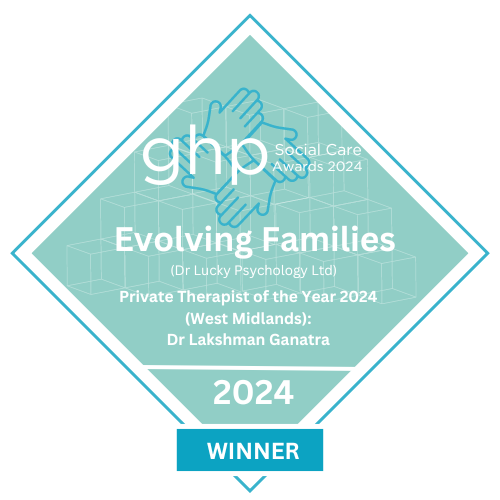Eye Movement Desensitisation and Reprocessing (EMDR)
Eye Movement Desensitisation and Reprocessing (EMDR) is a psychotherapy technique recognised worldwide for treating psychological distress, particularly in relation to (but not limited to) trauma, such as direct or indirect experiences of violence, accidents or natural disaster which can result in post-traumatic stress disorder (PTSD). Originally pioneered by Dr. Francine Shapiro, an American Clinical Psychologist and Senior Research Fellow, in 1987, EMDR has been thoroughly researched, documented and developed further since. In the UK, EMDR has been recommended by the National Institute of Health and Care Excellence (NICE) as a highly effective treatment for PTSD.
EMDR therapy is also used to treat more prolonged, low-grade distress that originates in shock or loss in adult life and/or issues experienced during childhood and is increasingly being used to treat:
- Depression
- Panic attacks
- Performance anxiety
- Phobias and fears
- Anxiety
- Low self-esteem.
EMDR holds the view that you re-live traumatic or triggering experiences which have not been stored in memory properly and overwhelms your current coping abilities. These experiences are believed to be unprocessed or blocked which result in things in the here and now triggering the same raw feelings and accompanying sights, sounds and thoughts. It is believed that the traumatic memories trigger the brain’s natural Fight, Flight and Freeze responses due to not being stored properly.
Usually, our brain naturally and automatically processes events and memories, and these are stored in the logical part of the brain (frontal), which can understand and assess that the memory is not happening now and gives you the tools on how to deal with the memory making it less overwhelming. If things haven’t processed naturally this way, you might experience flashbacks, phobias and sudden bouts of fear, for which you have no rational explanation.
How does it work?
EMDR uses eye movements and other stimuli (e.g., tapping) to help you process traumatic memories rapidly in a safe way. It is thought to be effective because recalling distressing events is often less emotionally upsetting when your attention is diverted. By using rapid eye movements (moving your eyes side to side quickly), you are paying attention to the eye movements whilst also thinking about your memory. By doing this we engage the brain’s natural adaptive information processing mechanisms by creating bilateral sensory input. This simply means that you are able to focus on both the traumatic memories as well as the sensory feeling of the present moment where you are focussed on rapidly moving your eyes. This allows you to be exposed to the memories or thoughts without having a strong psychological response.
There are different forms of creating this bi-lateral stimulation. The most common is to move your eyes side to side by following my fingers. This is done quite quickly and we will do some tasters on how this feels. Sometimes people don’t like the feeling of this, so we have other methods such as paying attention to sounds or tapping sessions which move from one side to the other just as quickly. Bi-lateral stimulation has been found to enhance memory processing and there are a number of theories explaining how it might do this.
EMDR is broken down into 8 phases over multiple sessions.
Phase 1: History and treatment planning
Phase 1: History and treatment planning
First, we review your history and think about what you have tried before and how ready you are for EMDR. This will include talking about your trauma and understanding how it is impacting you. This is very similar to most other psychotherapies.
Phase 2: Preparation
Phase 2: Preparation
Once we have gathered a full history, we then work on preparing you for EMDR therapy. Because EMDR requires you to recall distressing events, it is important to learn different ways to cope with the emotional and psychological distress you experience. This is especially important to ensure you have the skills to cope in between sessions.
Phase 3: Assessment
Phase 3: Assessment
Once you have developed and practiced your coping strategies, we will move on to identify the specific memories that are distressing you and learn how to recognise the associated effects of these (such as the physical sensations you experience when you think about the distressing event). We select ‘target’ memories and decide which are most important to work on. Sometimes we can group these memories together.
Phases 4-7: Treatment
Phases 4-7: Treatment
Once we have the target memories, and you feel confident in your coping strategies, we will then start the ‘eye movements’. The experience is very different from traditional psychotherapy. Drawing on the target memory, your brain is allowing its self to go where the difficult and positive memories are. This is often the most difficult part as you are focussing on disturbing events and the emotions and sensations that go with it. Gradually your brain will shift your thoughts to recognise that the distressing event is not in the here and now and allow you to move on from the negative beliefs you hold. This process is repeated in sets, with time in between to see how the ‘processing’ is going, but not to analyse or interpret the experience.
The process can feel scary to think about, but we will work together to support you to feel safe. Whilst you engage with the difficult memories, I support you to remain fully present in the here and now so you can process the memories in a safe and contained way. You will never be asked to ‘process’ things between sessions, however sometimes this happens naturally. Because of this, I do ask you to keep a diary between sessions so that we can compare together what may have come up and how you have been feeling.
Over time, the distress over particular thoughts, images, or memories should start to fade. We will also work toward more positive beliefs about yourself.
Sessions are typically 90 minutes
Phase 8: Evaluation
Phase 8: Evaluation
We will work together during phase 4-7 to know how much impact the memories are having on you. Once we feel comfortable, we will evaluate the work and check the progress to understand if any other memories are still affecting you.
Sometimes not every distressing even or memory needs to be processed which is why it’s important to evaluate. Often people find that by processing certain memories, others process themselves. It’s a bit like jump starting the brain to naturally processing information as it should. The amount of therapy and processing will depending on the complexity and the history.
How effective is EMDR and is there anything I should know?
EMDR has been found to be extremely effective for treating PTSD and more recent studies showing effectiveness for a number of other difficulties. Research shows EMDR to be effective in reducing the re-experience of traumatic memories, feeling more able to cope and manage, reducing feelings of stress, anxiety and hypervigilance, not only in the short-term but also that people maintain benefits long after treatment has ended.
It is considered to be very safe with very few side effects. Some people do find the process distressing which is why it is extremely important to complete the preparation and assessment thoroughly. Sometimes people also continue to process their memories after a session had ended, which can feel scary and cause light-headedness and vivid/realistic dreams. It is therefore important to practice the coping strategies developed in phase 2.
Often people find the beginning of therapy the most difficult as you are talking about traumatic events which have bought you to therapy. It may be emotionally stressful whilst moving through the course of therapy, but rest assured, we will work to support you throughout.
Dr Lakshman (Lucky) Ganatra has trained in EMDR and Dr Sarjan Grewal is currently training in EMDR. Dr Grewal may be able to offer concessionary rates for EMDR therapy whilst he completes training. If this would be of interest please Contact Me.
If you would like to find out more information about EMDR and how it might help you or are thinking this might be the right approach for you, please Contact Me to discuss how we might be able to help.










